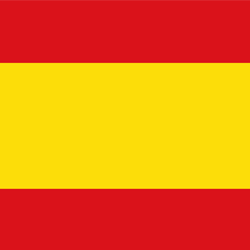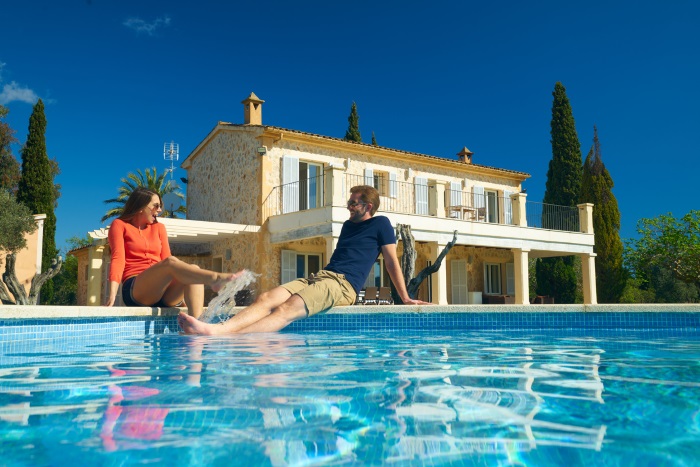Even if an idyllic property initially appears surprisingly affordable, it’s important to make sure you’re factoring in all the costs attached to buying a home in Spain.
The price of the property is, admittedly, the main expense, but there are lots of smaller ones you may not have considered.
So without further ado, here are some of the most important costs to keep in mind when buying and maintaining a Spanish property…
Spanish property tax
This won’t come as a surprise to anyone who’s bought a property before, but for first time buyers it’s vital to remember that your budget shouldn’t be based only around the purchase or mortgage price of a property. There are many other expenses to consider, and some of these will be different in Spain than they are in the UK.
For example, non-residents will need a Spanish tax identification number (NIE) before they are able to buy any property. These must be used on all tax returns too.
When buying a property in Spain, most recommend incorporating an extra 10-15% of the purchase price in your budget to handle the rest of the initial costs involved, like property tax.
The kind of tax you’ll need to pay for a property purchase will depend on the kind of property it is.
If you intend to buy a property that’s never been sold before, you’ll need to pay VAT – which is called IVA in Spain. This IVA is 10% of the purchase price in mainland Spain, and 4.5% in the Canary Islands (where it is known as IGIC).
As well as VAT, buyers of new homes will need to pay Stamp duty (AJD), which is 1% of the purchase price.
For houses that have been bought before, you’ll need to pay Spanish Transfer Tax (ITP) instead of VAT. In ITP, the Stamp duty is often included in the ITP price. The ITP rate is generally 7%, but some autonomous regions in Spain have higher local rates.
On top of the taxes of the property purchase itself, you should also consider potential estate agency fees, valuation costs, notary costs and the Spanish Land Registry fees. Valuation, notary and Land Registry fees are typically around 1% of purchase price each.
Oh, and don’t forget to include furnishings in your budget. A lovely new house is less enjoyable if it’s empty! Typically, completely furnishing a 2 bedroom apartment can cost between €10k-15k, but this is definitely an area where spend can vary!
There’s a handy tool on StrongAbogados for figuring out the costs involved in a Spanish property purchase, check it out and find out how much your dream property could really set you back.
Ongoing property ownership costs
Once you own a property you also have to pay to maintain it. In most cases, this will be a year-round expense even if you’re only using the property in summer or rent it out at various points of the year.
An important cost to note is the property ownership tax, called IBI. This is similar to council tax in the UK and depending on where you’re based you’ll need to pay it once or twice a year. It’s calculated based on rateable value (also called valor catastral) and is paid to the town hall. For this kind of set payment, it’s best to arrange a Direct Debit so you stay on top of it.
Similarly, if your property is part of a community development, you’ll need to pay a regular community fee. These can be monthly, quarterly or annually and are common for properties with communal areas or facilities like gardens, pools or spas.
Non-residents will need to pay an income tax, but this tax changes depending on whether or not you rent the property out.
For those renting out a property, the income tax is simply 25% of the income earned from the property. Income tax for Spanish residents with other sources of earnings depends on the level of income. Keep in mind, the income tax is only 19% for EU residents rather than 25% for non EU residents.
Other costs include the standard utility bills, and potentially the hire of a professional cleaner if you’re renting out the property as a holiday let.
The cost of good help
During a Spanish property purchase its recommended you find an independent Spanish lawyer (or ‘abogado’) to help with the process.
While a lawyer will be able to help review and compile contracts and documents for you, keeping your purchase on track, make sure you use a reputable lawyer with reasonable fees.
While it’s common for lawyers to charge around 1% of purchase price, straightforward purchases may cost less to push through. Legal fees of 1.5%+ are excessive so make sure you do a bit of research before engaging a lawyer.
You can cut costs in other areas too, like when it comes to arranging to transfer the funds needed to make the property purchase. While many people use a bank to make their currency transfers, a specialist international money transfer provider can help you save time and money by offering better exchange rates, working fee-free and providing a range of services that can be tailored to suit your particular requirements.
How will the Brexit process affect costs?
The Brexit process is currently ongoing and the final terms of the separation are still highly uncertain.
Still, it’s likely non-resident’s income tax will be affected by the process. As mentioned earlier in the article, the income tax rate is around 25% for most non-residents but only around 19% for EU residents.
Depending on how the Brexit process concludes, this may change. Keep an eye on how the Brexit negotiations progress and seek independent financial advice if you’re concerned about how Brexit may impact your plans.
While the costs involved in a Spanish property process may seem intimidating, doing your sums early on can prevent headaches down the line. Set aside 10-15% of the purchase price to cover all the extra expenses and you should be fine!









